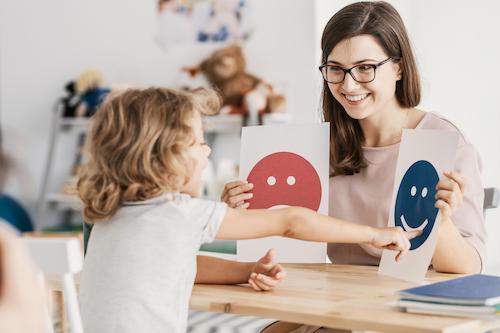Play therapy is defined as a psycho-therapeutic technique whereby the therapist attempts to give the child the opportunity to express his or her feelings verbally and non-verbally. Simply put, a therapist attempts to create a safe environment for a child to express their feelings, through ways that are understandable to a child. During this process the therapist will look at a child as a whole by viewing the various environments in which a child is present, such as the school, home and aftercare. This will allow the therapist to identify a child’s way of coping within their environment and attempt to make the child aware of these coping mechanisms. Thus, the therapist is not the all-knowing authority but rather a friend who travels with a child throughout the Gestalt play therapy process.
- Therapeutic contact and relationship (Building a relationship with the child) – This is the first and most important step within the Play therapy process, because without a trusting relationship therapy becomes futile. It is believed that a trusting relationship is therapy within itself. Therefore the therapist will focus on this during the first session and throughout the therapeutic process.
- Sensory, bodily awareness and contact – Children who are traumatised or struggle with emotional difficulties often disconnect from their reality. Hence the focus will be and getting the child to focus on the here and now, while being aware of certain reactions within their bodies when they feel a particular emotion. The child and therapist consequently focus on making contact with the child’s senses.
- Enhancing the sense of self – A strong sense of self is needed for a child to express their buried emotions. Therefore, the aim is to improve a child’s sense of well-being and inner strength. This is a continuous process.
- Emotional expression – Children often do not know what they feel and this is frequently expressed through anger and frustration. By providing children with the opportunity to learn more about their emotions in accordance with the accompanied bodily sensations, they will be more likely to express their emotions and understand them as well.
- Self-nurturing – Children often have self-destructive beliefs. During this stage a child learns to accept and forgive the self while also learning to treat the self well.
- Persistent inappropriate process – Certain behaviours persist after most of the steps in the Gestalt process have been completed. During this stage the therapist and child will make use of play techniques to address these persistent behaviours.
- Involving the parents/caregivers – The therapist will look at the child as a whole and not in isolation. Thus, the parents will be informed about the play therapy process and given feedback. The aim is to obtain the parents’ support and as a result parent skills training will be provided.
- Ending of therapy – After all of the steps have been completed the sessions may be terminated if all the set out criteria is met. However, the process may also be terminated if the child does not form a trusting relationship with the therapist or if the parents do not cooperate.
This is not a linear process. Therefore a child may be involved in more than one stage at a given time. It is therefore an integrated process which is adjusted according to the child’s pace, and cannot be rushed or predicted.


